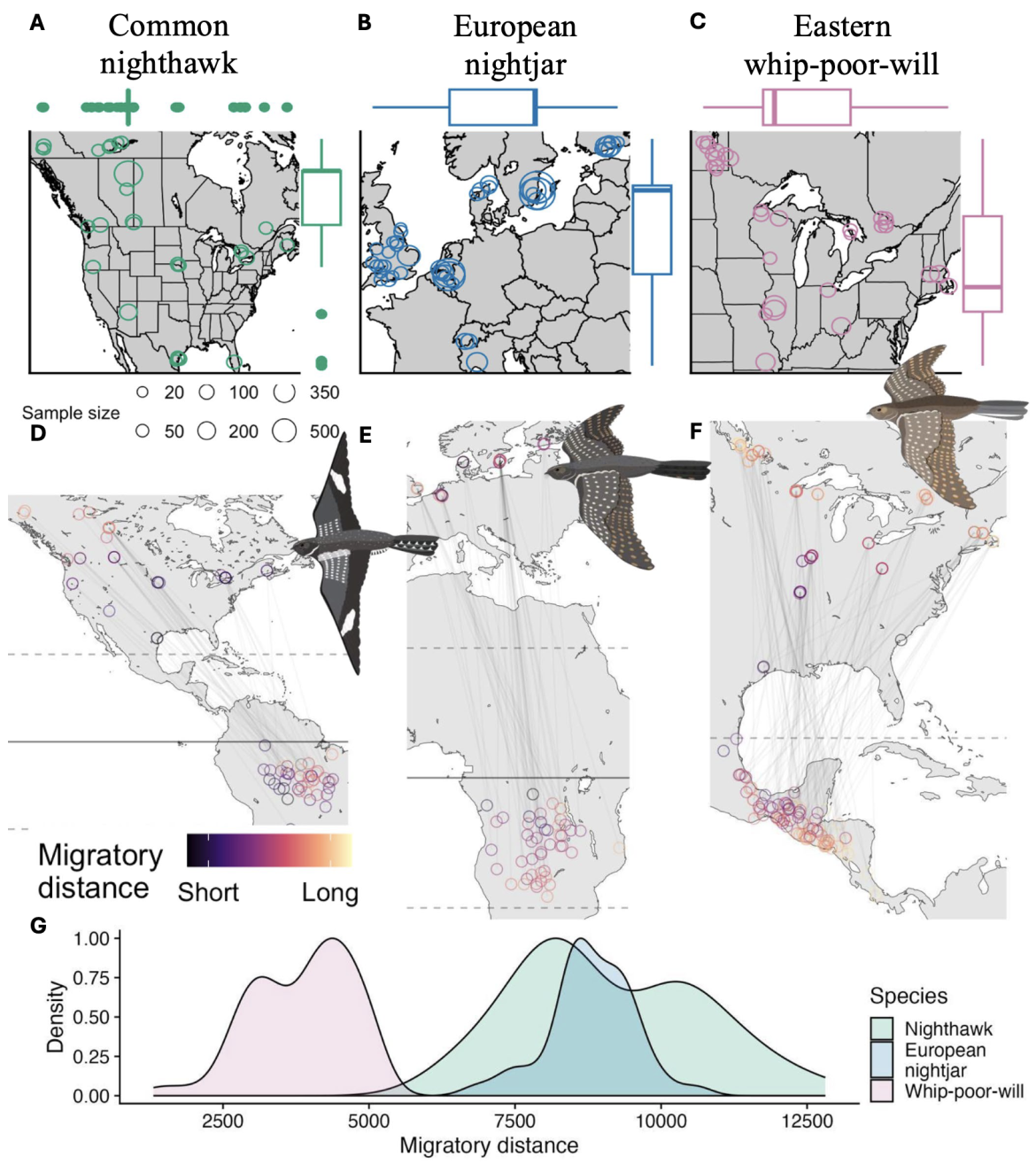
FIGURE 2 | Panels (A–C) depict breeding locations for 3,388 Caprimulgids captured on the breeding grounds in North America and Europe. Each circle depicts the number of individuals captured in a quarter degree grid cell, and sample sizes should be interpreted as ‘less than’ the number in question (e.g., the smallest circle is < 20 captures). Box and whisker plots show the distribution of latitudes and longitudes where outliers are depicted as points, the whiskers extend to 1.5 *the interquartile range, the hinges represent the 25th and 75th percentiles, and the central bar is the median. Panels (D–F) show breeding and wintering connections for 189 Caprimulgids tagged with archival GPS tags in North America and Europe. Lines represent the great- circle paths between the breeding and wintering locations (i.e., not the actual migratory paths). Panel G shows the distribution of migratory distances for each species.
ABSTRACT
Aim: To evaluate (1) whether three migratory nightjar species (Family Caprimulgidae) adhere to Bergmann's rule, (2) whether environmental factors on the breeding or wintering grounds determine body size, and (3) which mechanistic hypotheses best explain Bergmannian patterns in body size.
Location: North and South America; Europe and Africa.
Taxon: Eastern whip-poor-will (Antrostomus vociferus), Common nighthawk (Chordeiles minor) and European nightjar (Caprimulgus europaeus).
Methods: We used GPS tracking and morphometric data to assess competing hypotheses explaining variation in body size for each species, based on their breeding (n = 3388) and wintering (n = 189) locations.
Results: All three species exhibited Bergmannian patterns in body size, providing the first evidence that nightjars conform to Bergmann's rule despite adaptations to severe environmental conditions. Environmental and geographic variables at breeding sites were stronger predictors of body size than wintering-site variables. Although we found partial support for Bergmann's temperature regulation hypothesis, geographic variables, rather than specific environmental factors, emerged as the strongest predictors of body size variation.
Main Conclusions: Latitude and longitude correlated strongly with environmental variables and migratory distance; thus, these geographical variables likely encompass many factors that influence body size in nightjars. The present study is among the first to use tracking data from individual birds to understand how environmental pressures across the annual cycle are related to body size. Our findings highlight the critical role of geographic breeding-ground factors in shaping Bergmannian patterns, offering robust evidence to support nearly two centuries of research since Bergmann's rule was first described in 1847.